Securing a convenient and affordable mooring for one’s yacht could rightly be considered a ‘first-world’ problem of little concern to most of us. Certainly, conjuring up sympathy for an oligarch struggling to park his 80-foot super-yacht would be beyond me. But, a hard-working teacher with a life-long love of sailing, who has scraped and saved to buy their own 32-foot sailboat and generously hosts friends and family for sailing excursions – that’s another matter.
Just as the number of electric vehicles on the road now significantly exceeds the availability of charging stations, it seems there are more boats in the world than boat slips. So, aspiring owners of yachts, be they sailboats or power boats, must contend with the supply and demand squeeze and be prepared to play the long game. By way of example, our local yacht club has two ‘slip’ lists: the first includes members waiting, usually for many years, to rent any slip that will accommodate their boat; the second, a ‘better slip’ list includes members already holding a slip now queued up to snag a superior one, perhaps requiring a shorter walk to cocktails at the clubhouse.
Those of us who do not own a boat but nevertheless enjoy sailing, or more specifically, photographing people sailing, are left to cultivate relationships with that rare breed of individual in possession of a sailboat, a slip, and a generous nature. I am fortunate to know such a paragon – of the hard-working teacher ilk as opposed to the oligarch – affording me the opportunity to photograph the plethora of vessels making their way about the San Diego Bay.
My purpose in compiling this photographic essay is not to provide a treatise on the craft of sailing, but to capture its charm and illustrate why this ancient mode of transportation still captivates modern sailors. Observing the graceful lines of boats under sail, feeling the acceleration as they harness the wind, hearing waves course along the hull, and smelling an ocean breeze – sailing has something for all the senses.
On my photographic sailing excursions, I used a Leica Q2 and a Lumix S5 equipped with the kit 20-60mm f/3.5-5.6 and Sigma 100-400mm f/5.3-6.8 Contemporary lenses. I also maintained three points of contact with the boat at all times!
Deep water
San Diego Bay is a magnificent natural harbour and deep-water port enclosed by the cities of San Diego, Coronado, Imperial Beach, Chula Vista, and National City. Twelve miles long and up to three miles wide, the Bay provides a large, sheltered body of water for avid sailors to enjoy and the US Navy to employ. Military vessels, from Nimitz-class aircraft carriers to submarines, can be seen traversing the Bay, and ships under construction or undergoing a refit populate its eastern side.
Marinas along the eastern and western shores harbour diverse fleets of sailboats and motorboats that exploit the superb sailing environment of the Bay, braced by stiff breezes, and graced with spectacular views of downtown San Diego. That the Bay was the venue for the 1995 America’s Cup (in which New Zealand secured a sweeping victory over the United States for only the second time in 144 years) comes as no surprise.
USA 71
Harking back to its role as an America’s Cup venue, San Diego Bay became home to this yacht prominently displaying ‘USA 71’ across its mainsail. Used as a trial boat by Team Oracle in preparation for the 2003 race, although not in competition, USA 71 has found a new lease of life conveying tourists around the Bay — much more sedately than she would have transported her former race crew. For readers unfamiliar with nautical terminology, the triangular sail at the front (bow) of the ship is the jib. You may have come across the expression ‘I like the cut of your jib…’, usually uttered tongue-in-cheek by elderly military gents in period dramas.
Tachyon
White sails and hulls look gorgeous against the blue sky and turquoise water of the Bay and are easily seen from a distance — probably the basis of this colour scheme. Tachyon pictured here with an all-female crew, its skipper peering intently at the wind-direction indicator atop the mast, represents a pristine example. The physicists among you will know that tachyons, hypothetical but non-existent subatomic particles, travel faster than the speed of light. It’s a clever if an ironic name for this boat, probably doing 4-5 knots as it passes south of the Coronado bridge propelled by a westerly breeze from the ocean.
Faux pas
The boat is not called faux pas, but the captain certainly committed one when failing to pull in the ‘bumper’ still hitched to the exterior of the hull. These cylindrical rubber or plastic devices protecting the hull from direct contact with the quayside when docking are meant to be stowed when not in use. The Gallant Fox is nevertheless moving at a clip as she sails ‘close hauled’ across the breeze, sails trimmed tightly to provide a wing-like aerodynamic profile, her course veering closely to the wind, giving maximum ‘lift’ through the fully inflated sails, stabilised by the submerged keel as she leans against the pressure of the wind.
Head on
Happily, we were heading in the same direction as this yacht, apparently sailing directly towards the camera. The boat is relatively upright, leaning only slightly despite a wind blowing almost at right angles to the sail as judged by its wind-direction indicator. A pennant bearing a crown logo is attached to the rigging, another indicator of wind direction and of the ship’s home base, the Coronado Yacht Club.
Pennants ahoy
Nautical flags, banners, and pennants are signalling devices still in use today, most often seen on special occasions or at regattas. Brightly coloured by necessity and strictly limited to a highly visible palette of black, white, red, blue and yellow, they make a glorious sight fluttering in the breeze against the cerulean blue sky. The four flags visible in the close up, from bottom to top, represent Quebec, Alpha, Hotel and Delta.
Red spinnaker
Breaking with the all-white colour scheme, this yacht has unfurled a bright red, balloon-like sail called a spinnaker. The furled jib, visible as a dark bar running diagonally from the bow to the mast, is rendered ineffective in this configuration, since the mainsail, eased out as far as possible, blocks it from the wind. The boat is running downwind heading southeast towards the bridge, the ‘point of sail’ at which spinnakers are deployed to catch as much breeze as possible. Sometimes referred to as ‘chutes’, spinnakers behave like parachutes, that is, inflated by the wind to provide thrust in the direction of their convex surface. The boat is named Happy Ours, no doubt an expression of delight in its ownership and a play on the popular restaurant ploy of attracting customers through discounted drinks and food during early evening ‘Happy Hours’.
Trimaran
In a double departure from the mainstream, this vessel sports not one but three hulls and ominous black sails. Trimarans offer threefold benefits of speed, stability, and lightness, and are a popular choice amongst San Diego sailors. The large jib is not quite fully inflated, as indicated by the ripples. In the extreme, failure to properly control a sail can result in luffing when the sail is eased so far past optimal trim that airflow over its surface is disrupted, causing it to flap. High-rise hotels and The Shell amphitheatre (highlighted in a previous article) provide a dramatic backdrop for the crew of this vessel.
Under the bridge
The Coronado Bridge is a familiar sight in a number of these sailing photos. Its sweeping curve spans the Bay from Coronado to downtown San Diego, not only defining the boundary between the southern and northern regions of the bay but also demarcating the point where westerly breezes blowing from the ocean along Glorietta Bay give way to more southwesterly wind coming down San Diego Bay. These shifting winds, together with the disruption of wind flow by the massive pillars of the bridge, make negotiating passage tricky.
Heading downtown
Once clear of the bridge with what appears to be a relatively straight shot through the Bay towards the downtown skyscrapers, sailors instead find they need to weave back and forth against the oblique, oncoming wind. Sailboats are tacking when they swing around to head on the opposite diagonal course. The crew has a busy few moments as the boom at the base of the mainsail swings across the boat (keep your head down!) and the two lines to the corner of the jib are released and pulled swiftly in turn in order to bring the sail to the other side of the mast. When executed heading downwind, this manoeuvre is referred to as jibing.
Open mouth
At its northern end the Bay curves anti-clockwise between the North Island Naval Air Station and the Point Loma peninsula and opens to the Pacific Ocean at its south-facing mouth. As evident in this photograph, sailing is popular at this end of the Bay. Expansive boat-filled marinas in protected nooks, such as the aptly named Shelter Island, provide easy access to the ocean. Passengers sitting on the port side of the aircraft seen lifting off from San Diego International Airport would have enjoyed spectacular views of the Bay and Point Loma.
Schooner
In addition to the popular 32-foot single-masted sailing boats seen on the Bay, one occasionally spots larger, multi-masted ships such as this schooner providing tourists with a fun excursion through the Bay or out into the ocean. Although a more complex proposition, sailing these larger vessels nevertheless employs the same principles that apply to smaller craft, especially an appreciation of wind direction and how the sails should be trimmed in response. This ship, photographed with a telephoto lens, is probably returning from a trip out to the Pacific after sailing along Coronado Beach and the Silver Strand Isthmus.
Aircraft carrier
San Diego is a military town with an especially strong naval presence and no shortage of visible reminders evident along the Bay. Here, Dragonfly sails past the USS Midway, a decommissioned aircraft carrier with storied service record and now a floating museum. As the United States’ longest-serving aircraft carrier, the Midway saw duty from 1945 to 1992. Its flight deck showcases vintage US Naval aircraft, most designed and built in Southern California
The imposing silhouette seen in the background as this sailboat tacks across the Bay is the USS Abraham Lincoln, a Nimitz class aircraft carrier whose home port is the North Island Naval Air Station in Coronado. She is the second US Naval vessel to be named after Lincoln, and the fifth Nimitz-class carrier in the US fleet. Riding a stiff breeze, the sailboat will soon need to tack and head away before getting too close to the fence marking the no-entry perimeter around the carrier.
Ships that pass, in the day
It’s a thrill to see a naval vessel while sailing the bay and a rare treat to see two of them at once. This photo, taken early one morning with an iPhone whilst catching the ferry across the Bay, depicts two very different naval vessels. The futuristic ship on the left is the US Cincinnati, an Independence Class Littoral Combat Ship (LCS) possessing a shallow aluminium trimaran hull designed for operation in the near-shore, tidal region of coastal waters. The ship on the right is an Amphibious Transport Dock, sometimes referred to as an LPD (Landing Platform Dock) of the San Antonio class.
Ferry, ‘Cross the Mersey
I doubt whether Gerry and the Pacemakers enjoyed skies like these whilst riding the ferry from Liverpool to Birkenhead! The ferries seen here operate daily between Coronado and the mainland. The larger Cabrillo runs between the Coronado Ferry Landing and Broadway Pier and the smaller Southgate the shorter route across to the Convention Center. Sailboats contend with wakes of these and a myriad of other motorized vessels plying the Bay. Caveat: sit astern if you don’t want to be splashed.
Dr Sic
An account of San Diego Bay sailing adventures would be incomplete without a shot of a boat powered not by wind, but by an onboard motor. The larger of these vessels are undoubtedly cool and avoid all that fussing with sails, rigging, wind direction etc. They also afford relatively comfortable living accommodations of which many owners (with convenient and affordable slips…) avail themselves. But, at the risk of mixing metaphors, when compared to the experience in a wind-powered vessel, sailing in a motorboat is a different kettle of fish, the preference for one over the other being a case of horses for courses and a little bit of what you fancy does you good. Enough now…
As a note in passing, you might have noticed that the business of naming boats brings out the worst excesses in puns and groan-worthy gags. This boat, Dr Sic, is one such example.
Salty crew
An account of sailing on the Bay would also not be complete without some shots of the sailors. Here’s a skipper at the tiller, a crewman attending to the rigging, a sailor enjoying a refreshing beverage, and a photographer (equipped with Leica Q2 and Billingham camera bag) trying to look authoritative at the tiller while pointing to a non-existent object in the distance.
It’s a social occasion
Almost back at port as the sun dips in the sky, the ten people on this boat have enjoyed a unique experience since no two sailing excursions follow quite the same course. They will have chatted and joked with, and perhaps even teased or harangued their fellow crew members during their delightful trip around the Bay. As a way to spend a relaxing afternoon in the company of friends, it’s hard to beat.
Red buoy
The race is over. The procession of sailboats rounds the final buoy, preparing to drop their sails and cruise to their slips under engine power. The sun is low in the sky, casting an orange glow on the sails, the crew, and the calm waters of Glorietta Bay. Cocktails await.
Holiday Boat Parade
The fun doesn’t stop when the sun goes down, however. The annual Holiday Boat Parade along the Bay is a spectacular festival of boats, big and small, illuminated for the occasion by lights strung on rigging and along the decks. All powered by inboard or outboard motors this time, the boats proceed sedately up and down the Bay to the delight of crowds gathered on the shore. Cheesy holiday music is de rigueur, along with wearing Santa hats and a warm jacket.
As 2022 opens, I look forward to yet more sailing fun, perhaps even venturing beyond the Bay out into the Pacific Ocean. Sailing lessons are also on the agenda, in order that I can be an active and knowledgeable crew member rather than just an aspiring nautical photo-journalist.
Read more by the author
Make a donation to help with our running costs
Did you know that Macfilos is run by five photography enthusiasts based in the UK, USA and Europe? We cover all the substantial costs of running the site, and we do not carry advertising because it spoils readers’ enjoyment. Every amount, however small, will be appreciated, and we will write to acknowledge your generosity.

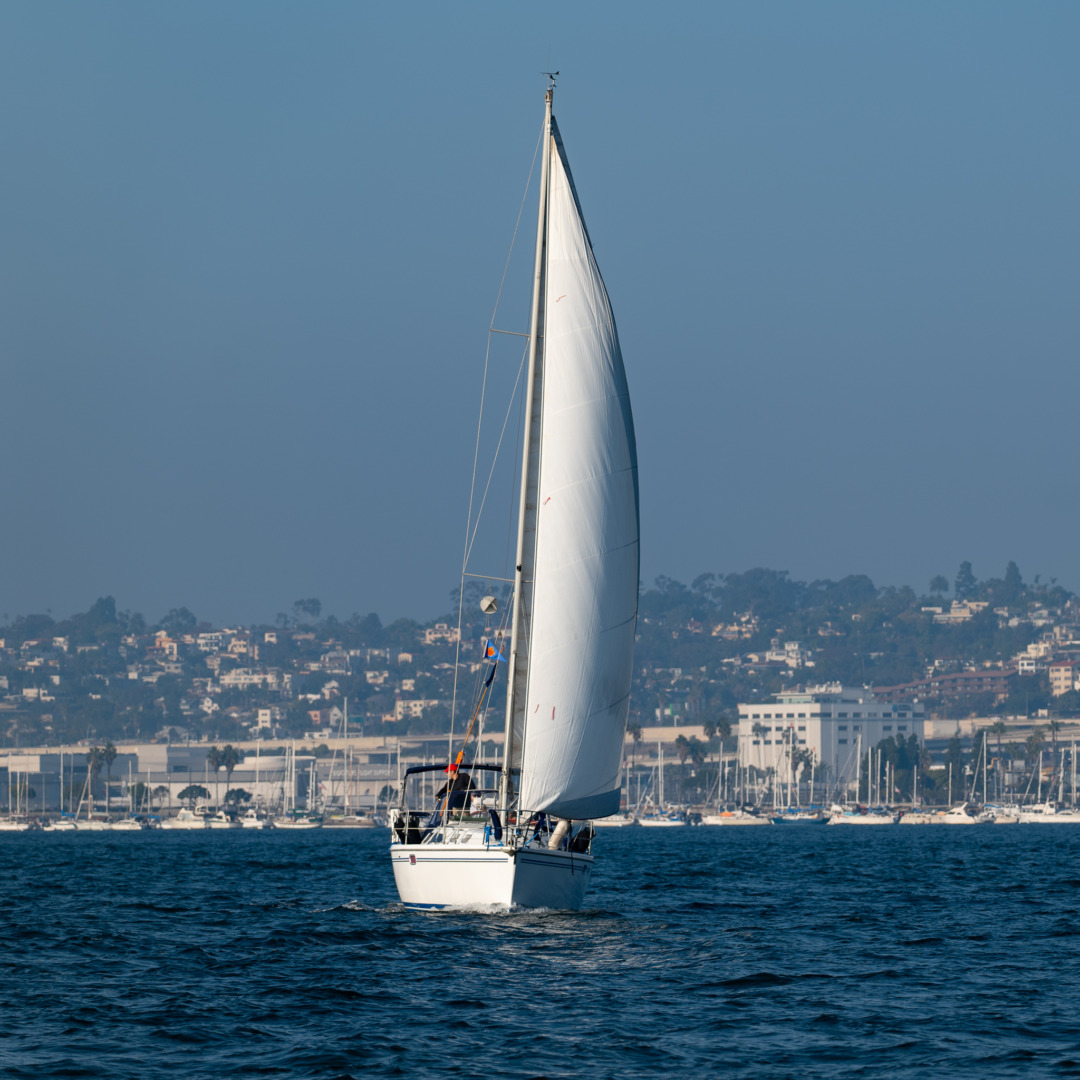
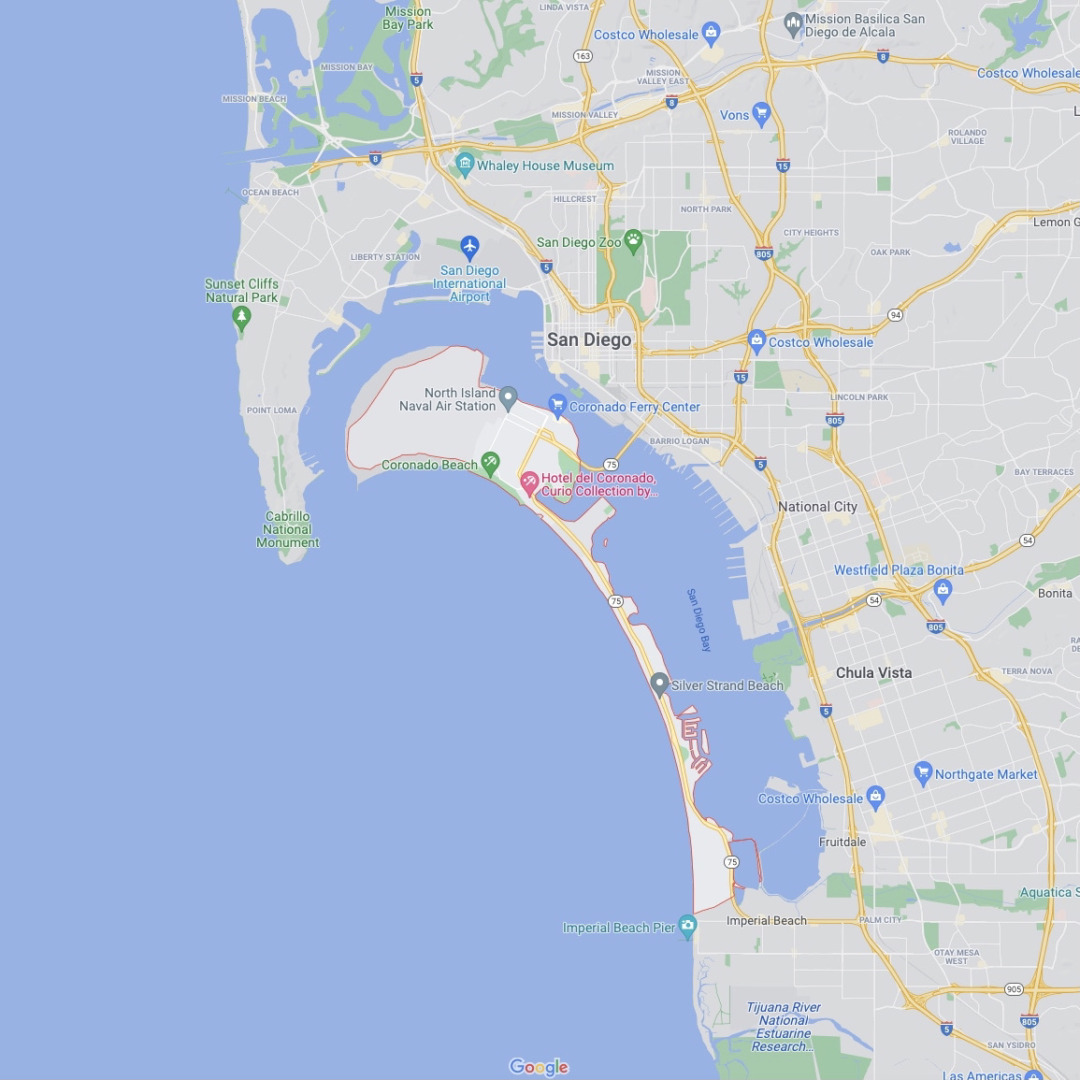
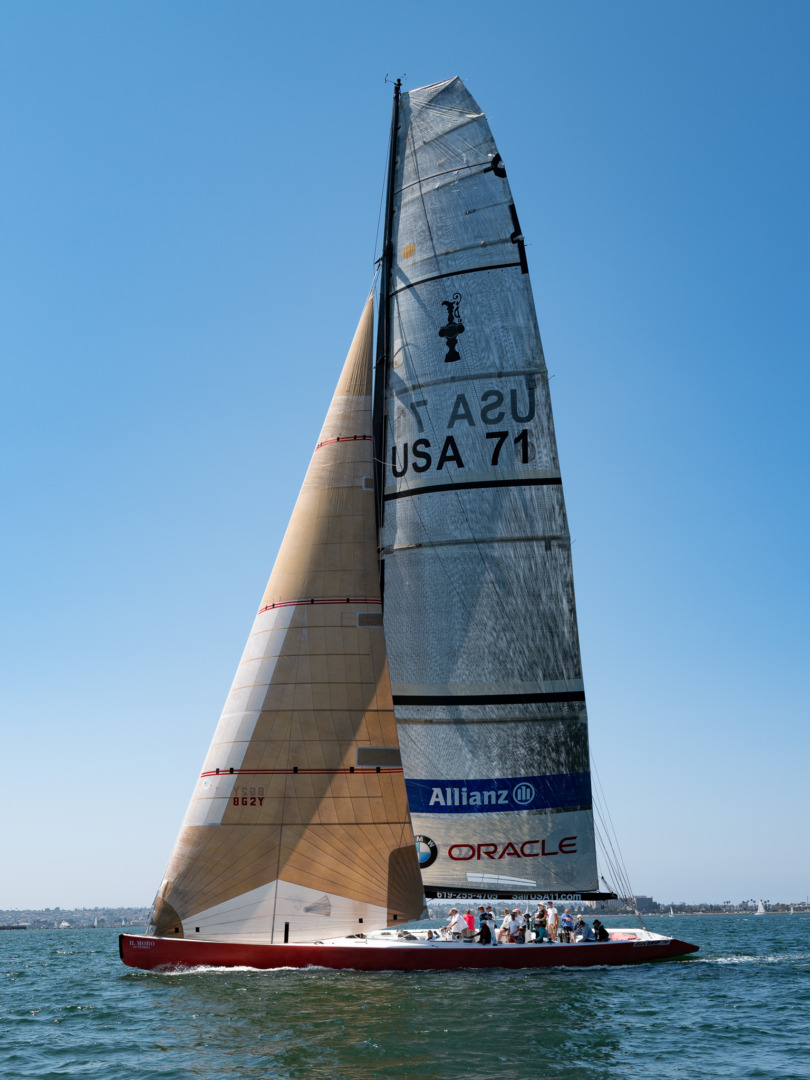
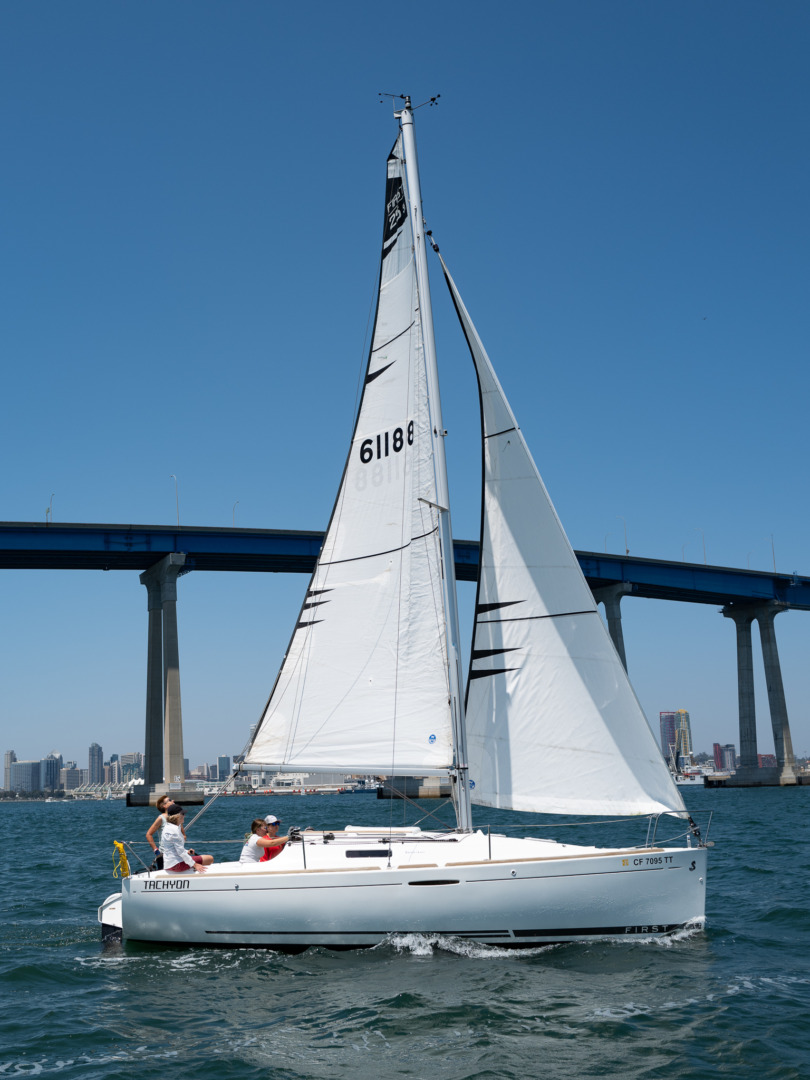
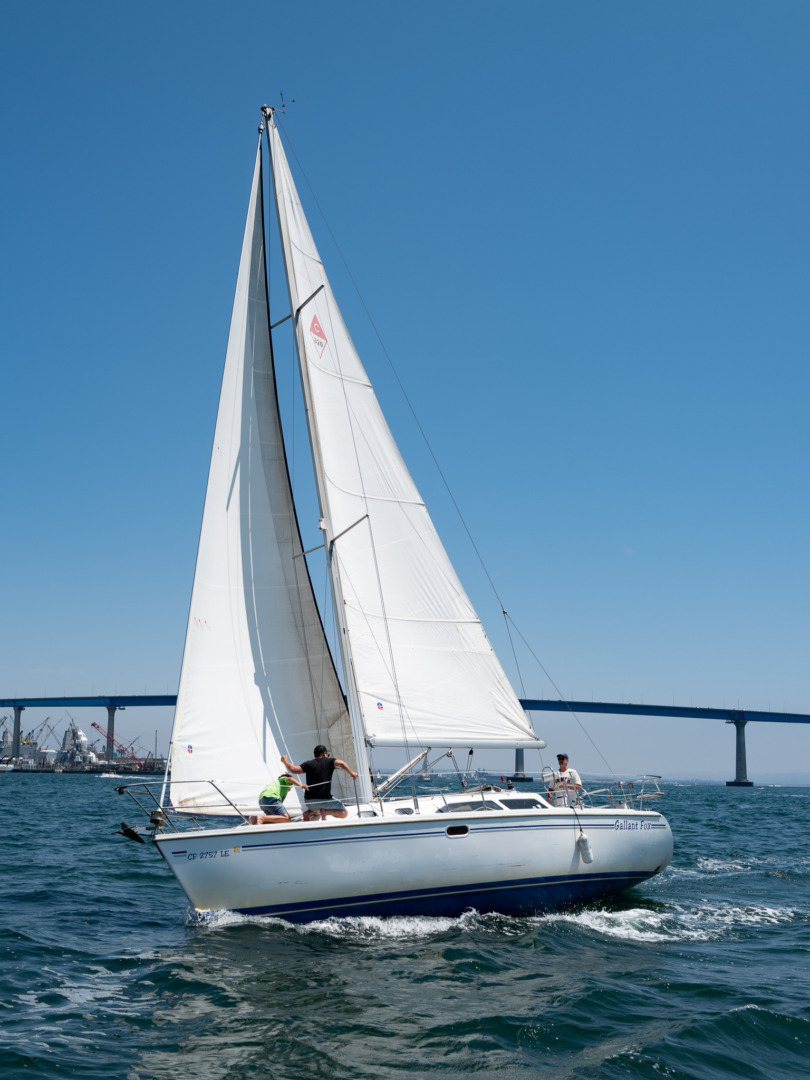

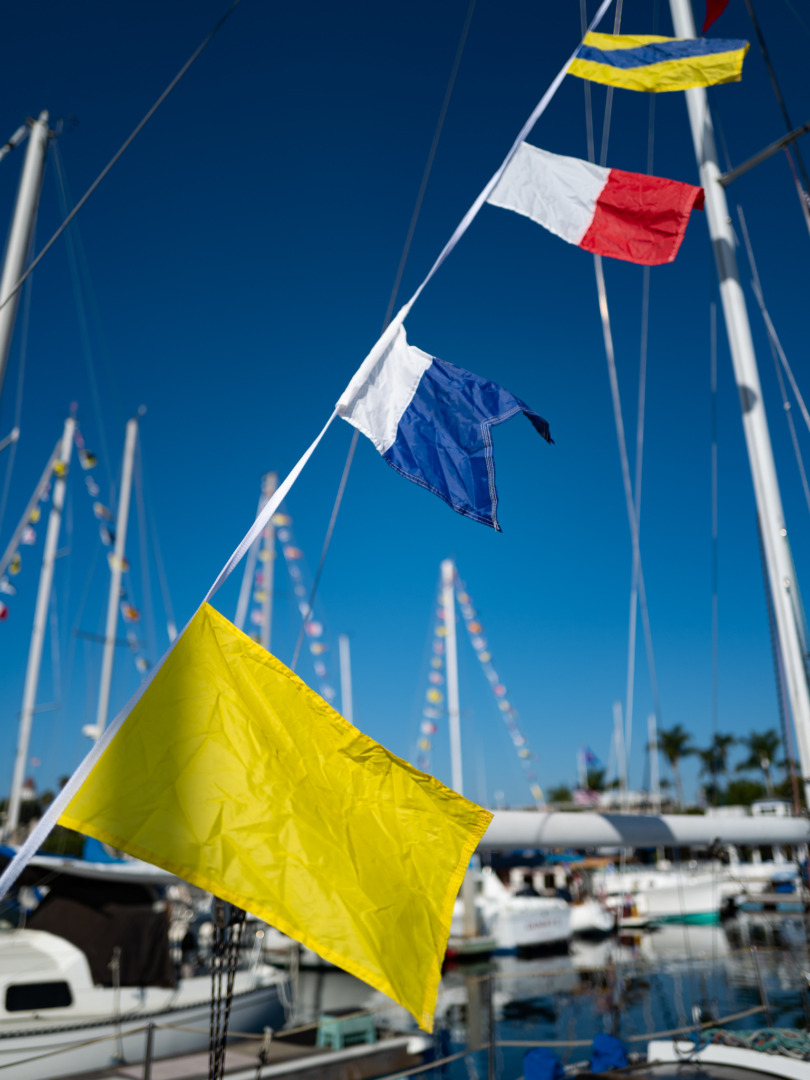
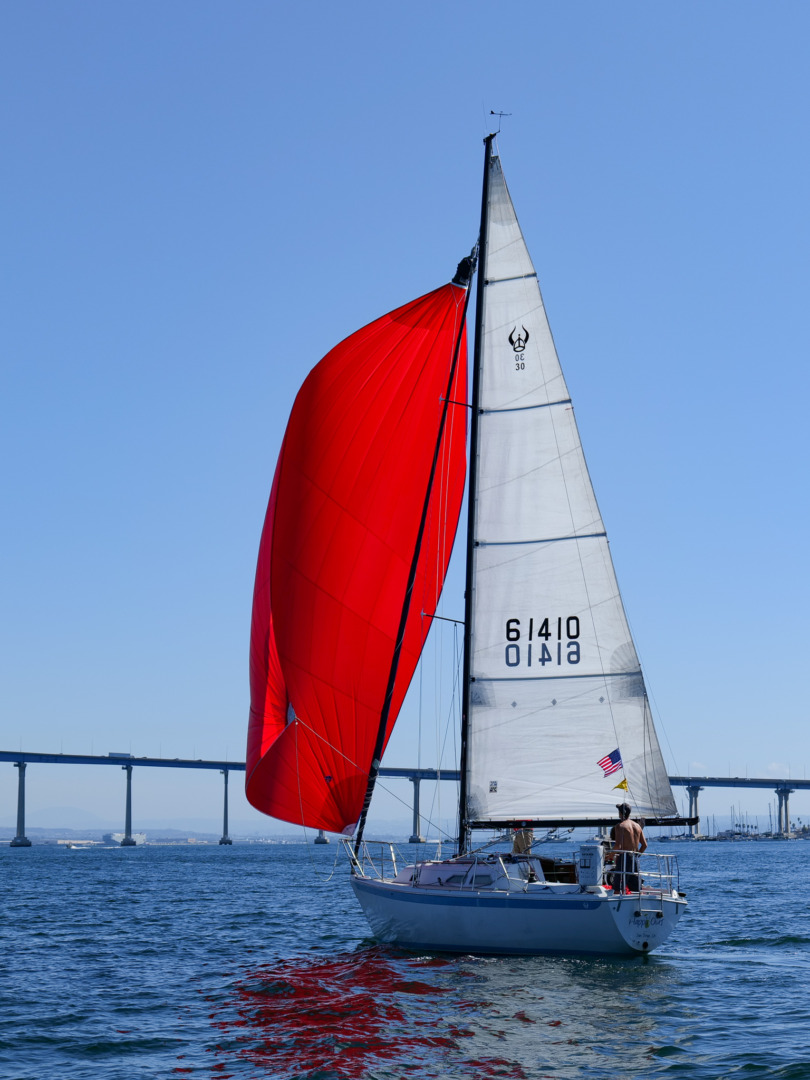
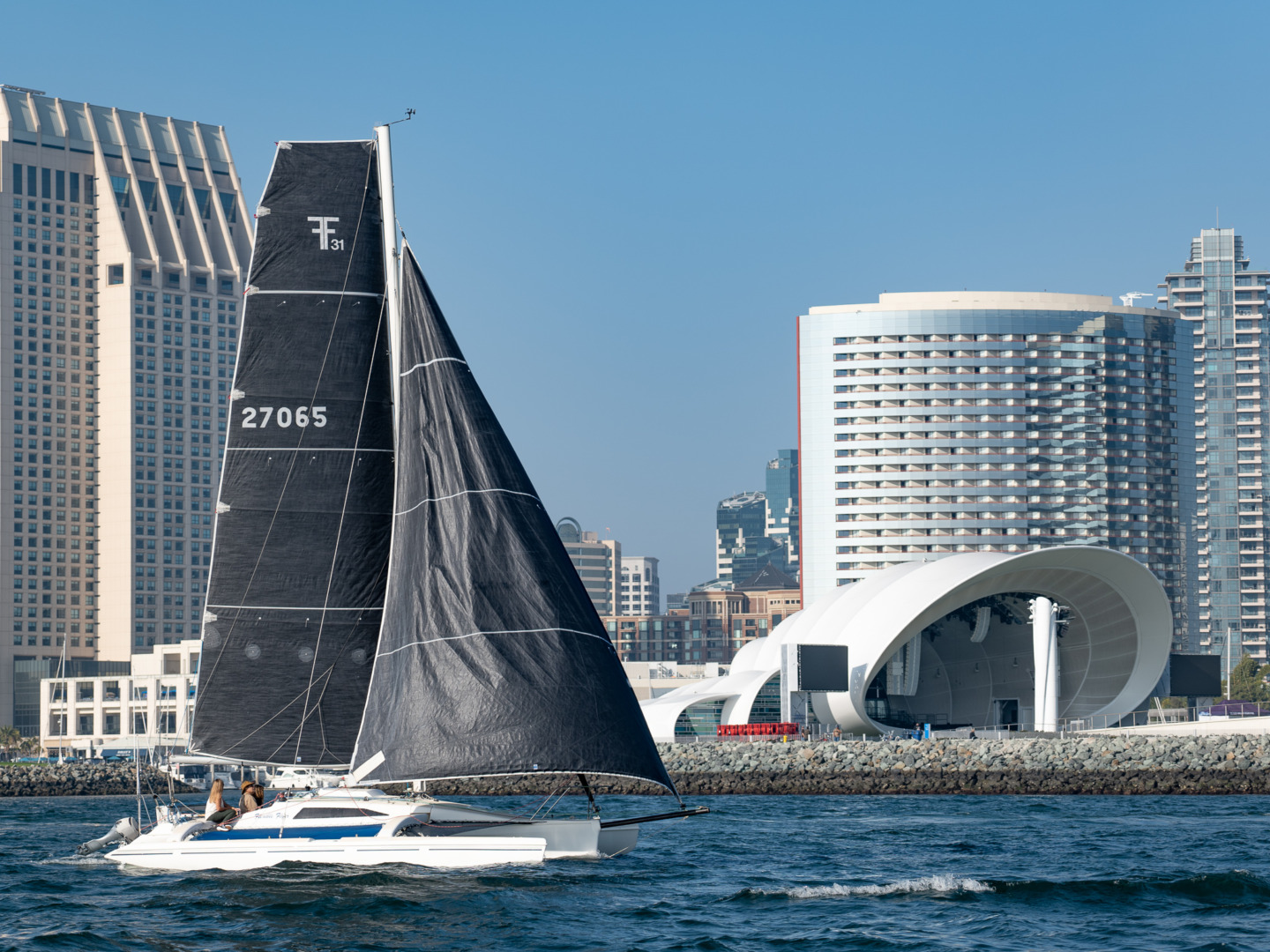
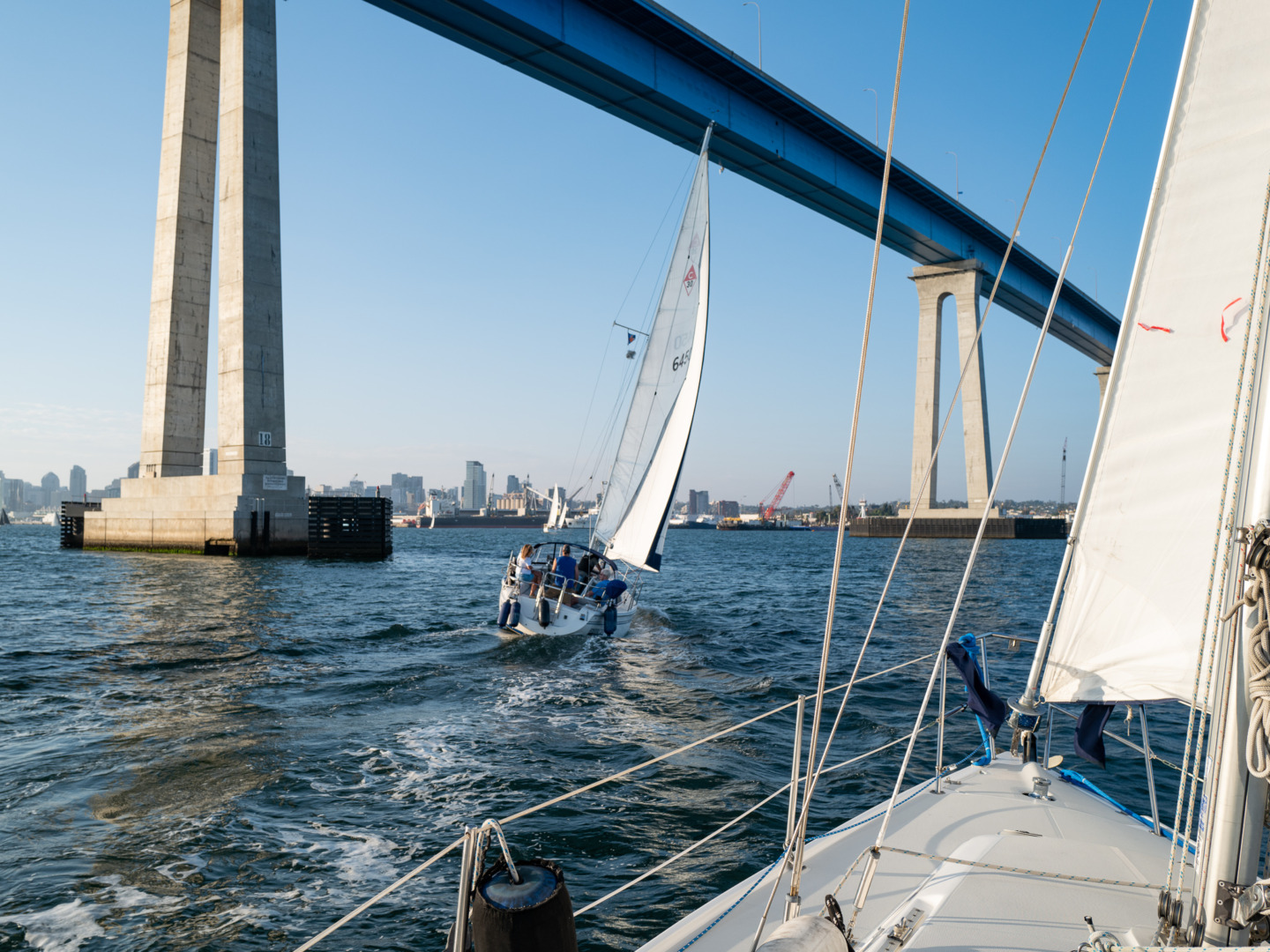
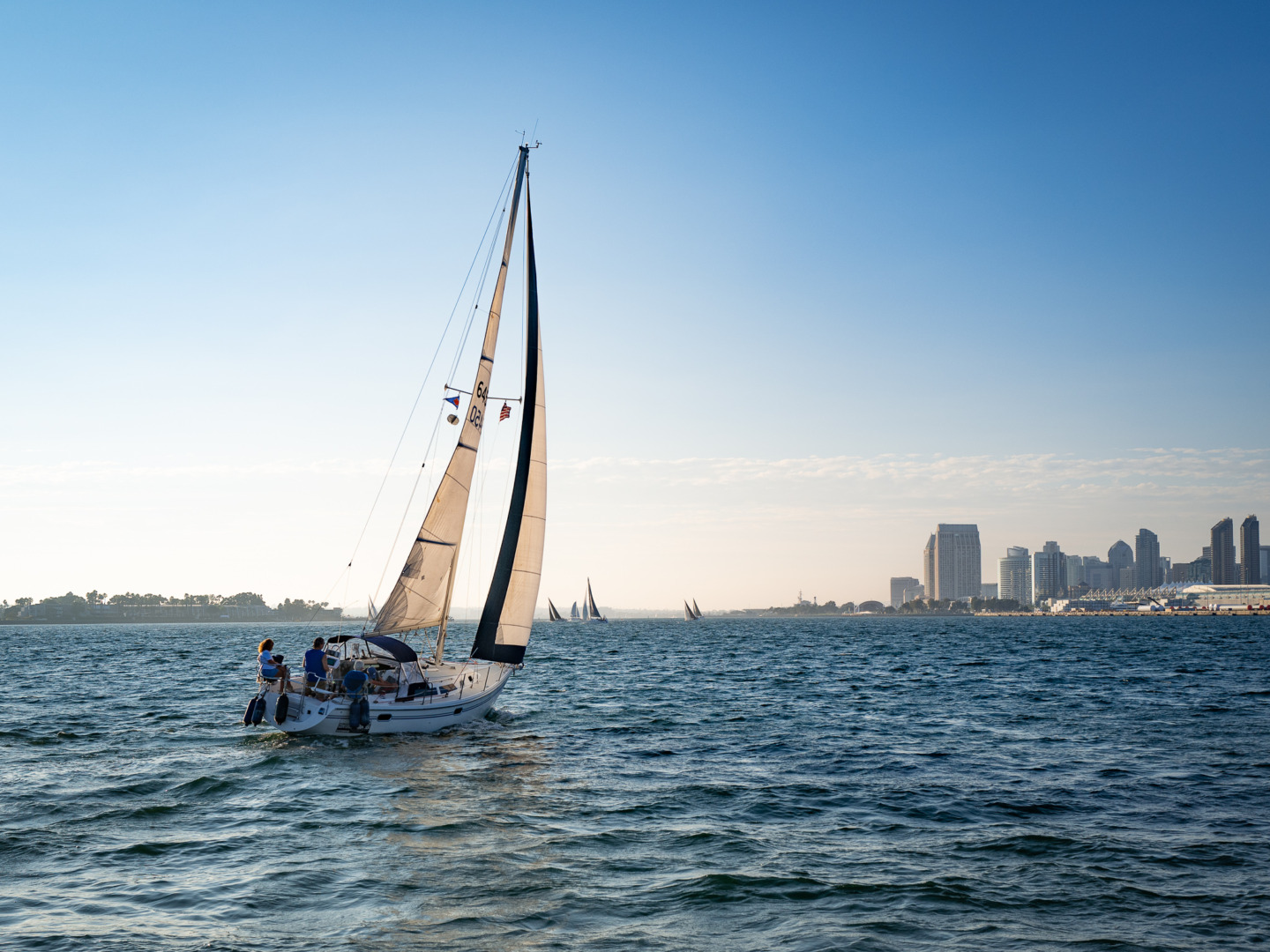
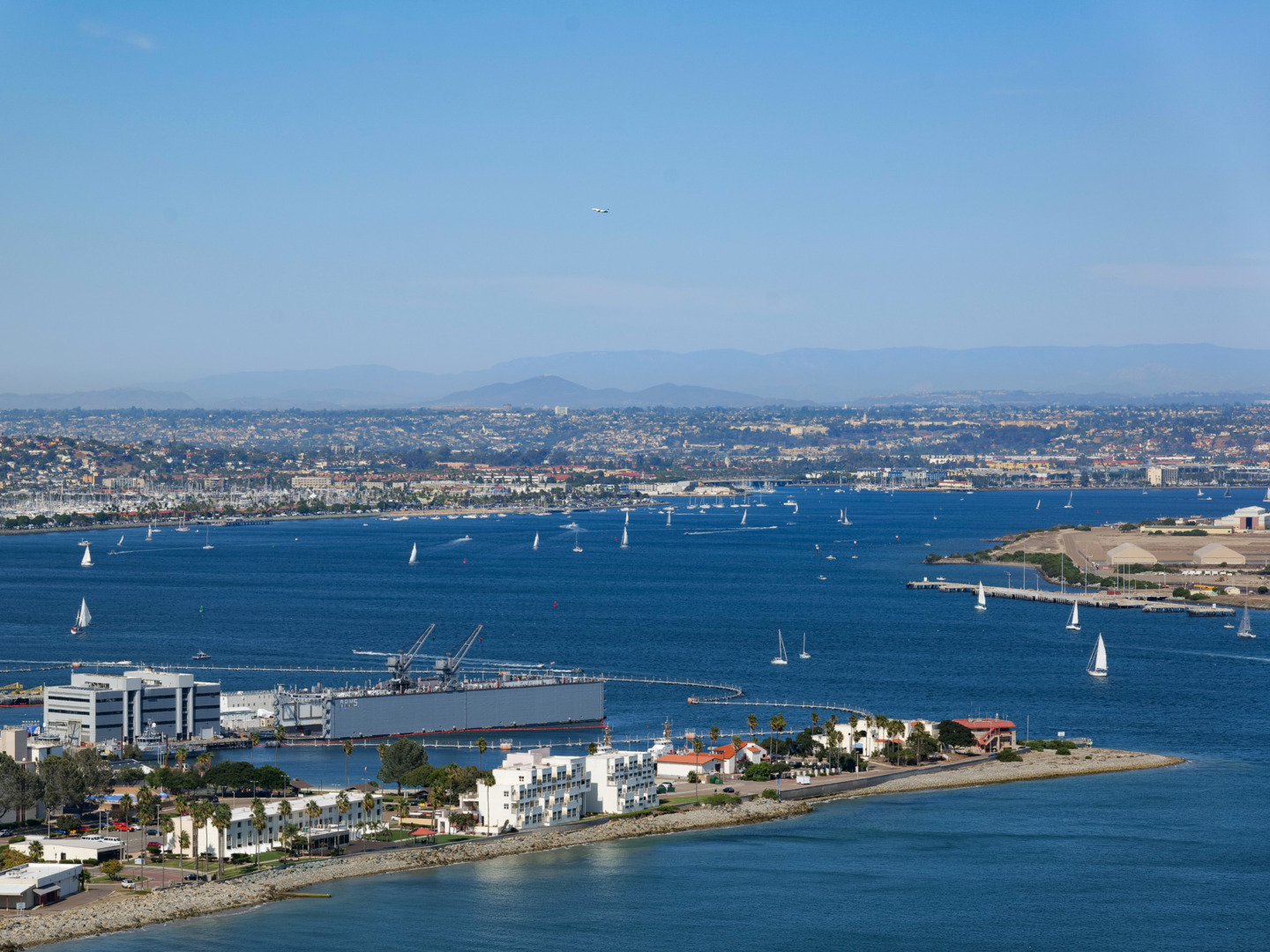
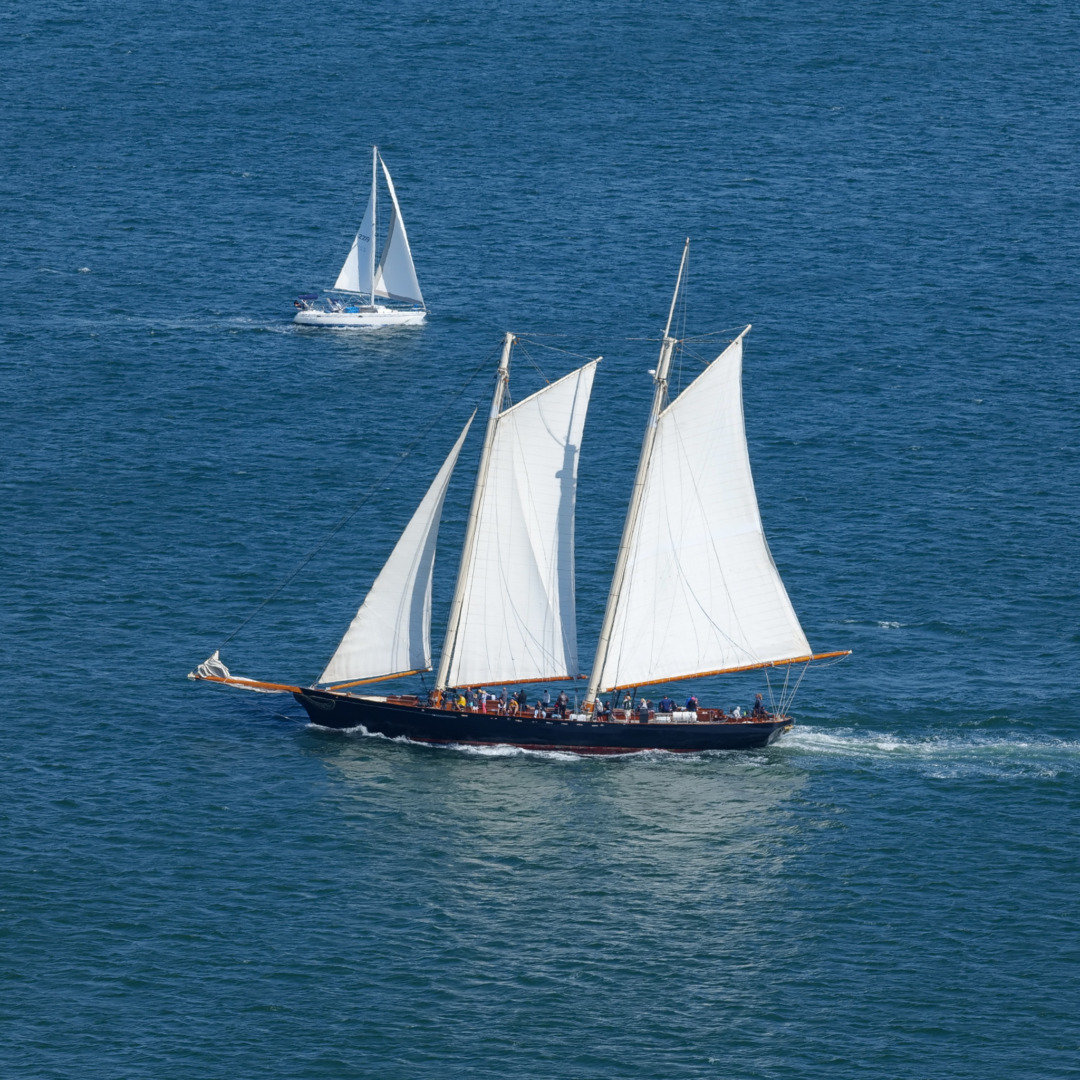
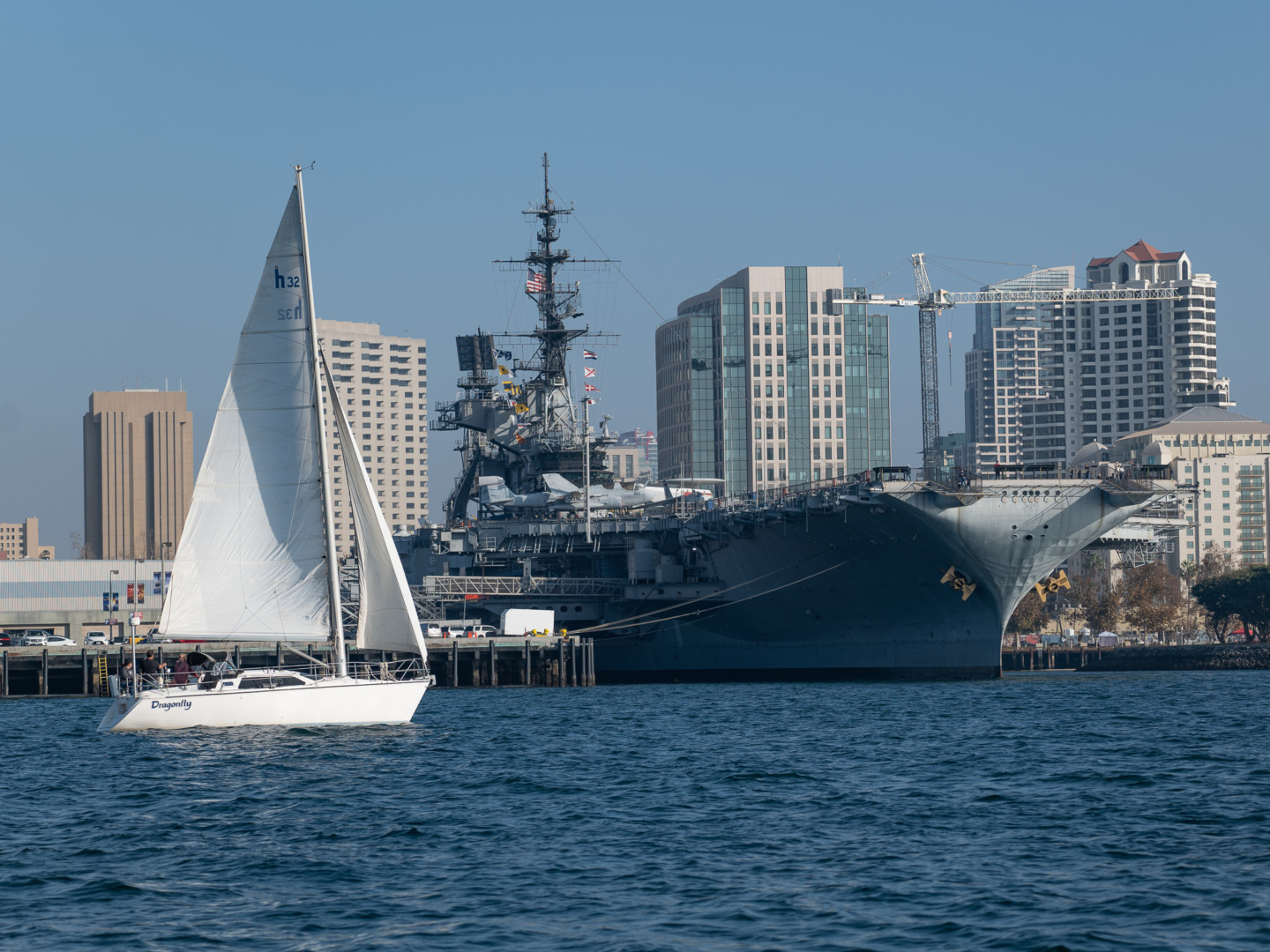
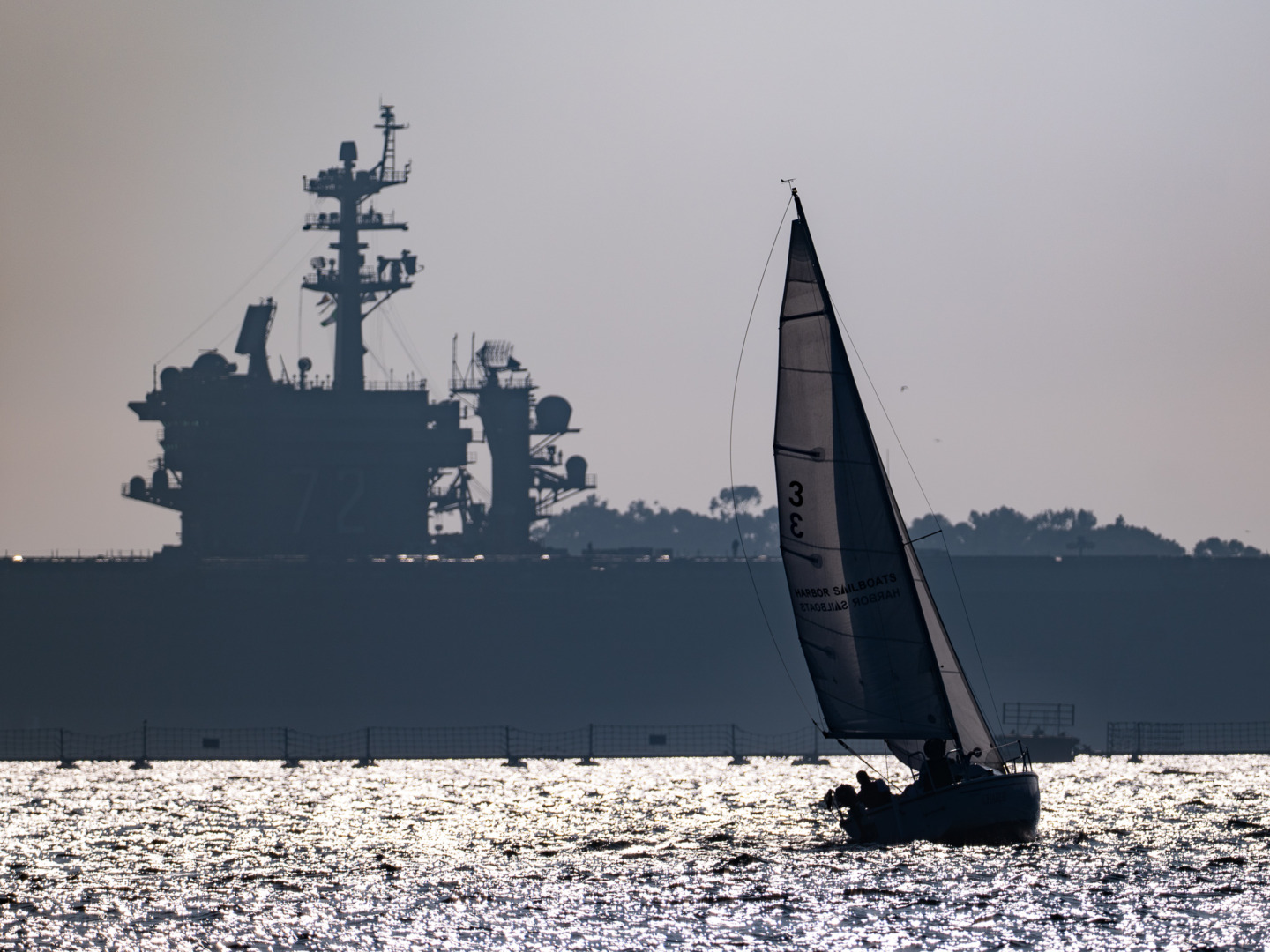
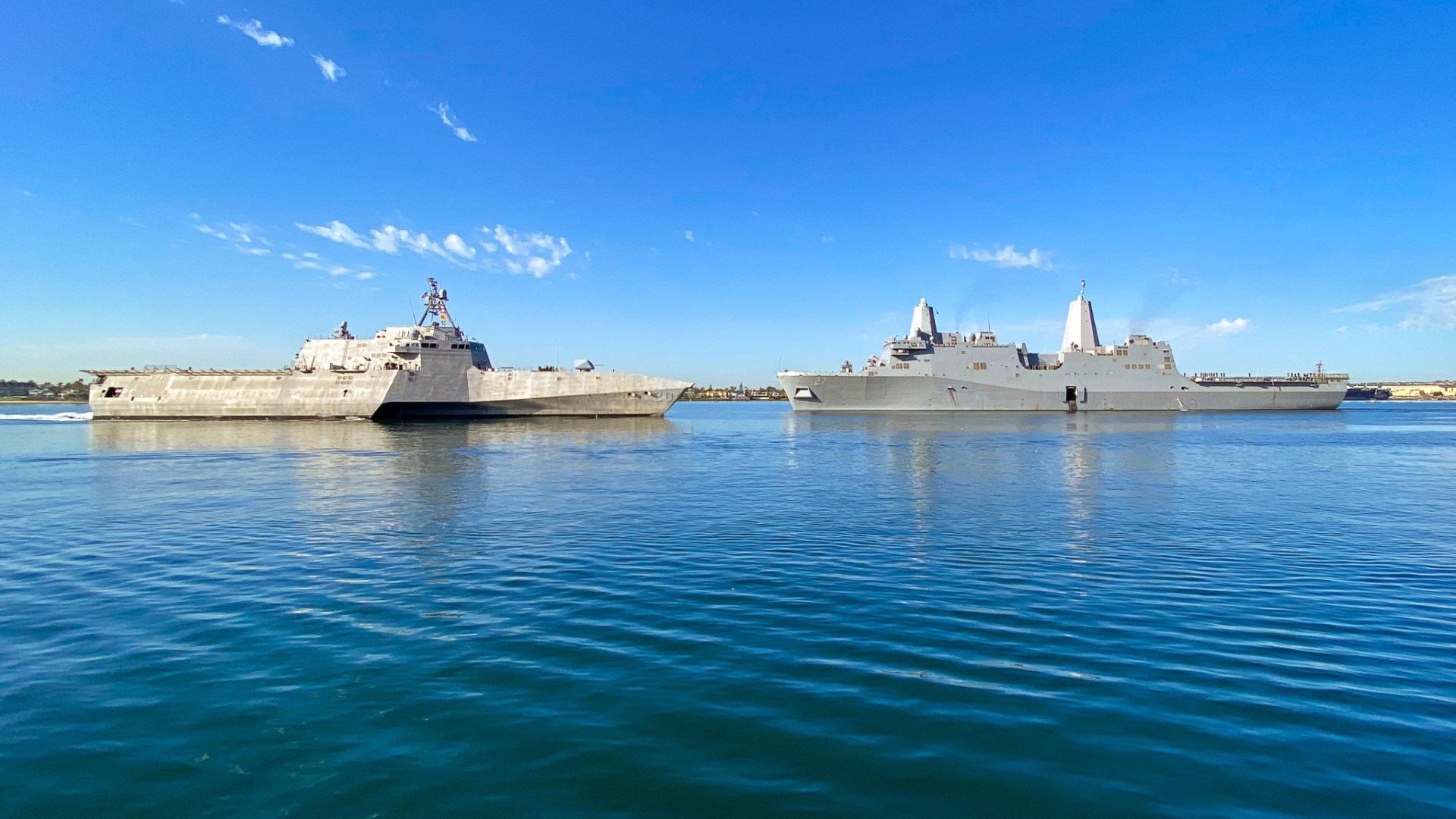
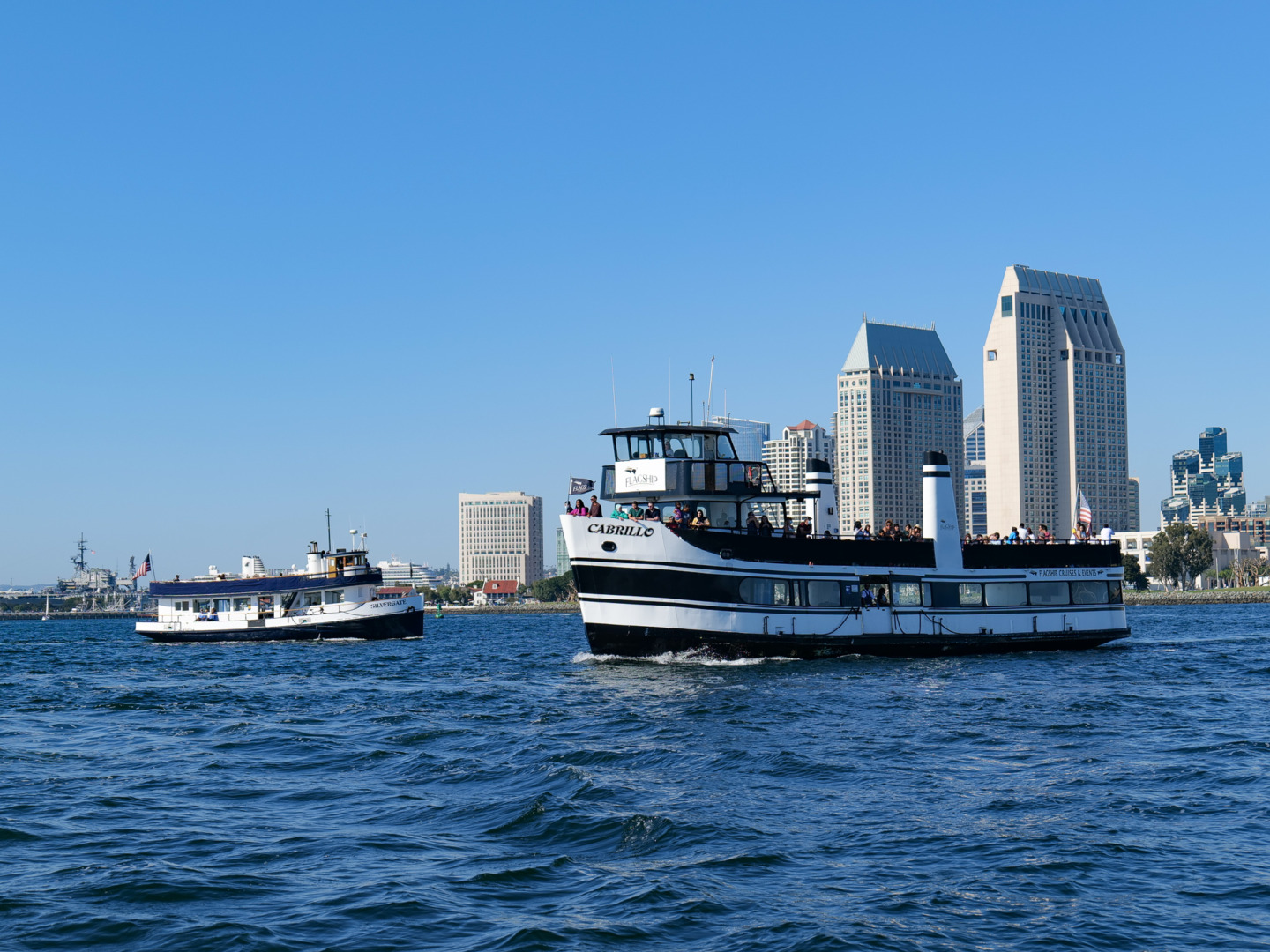
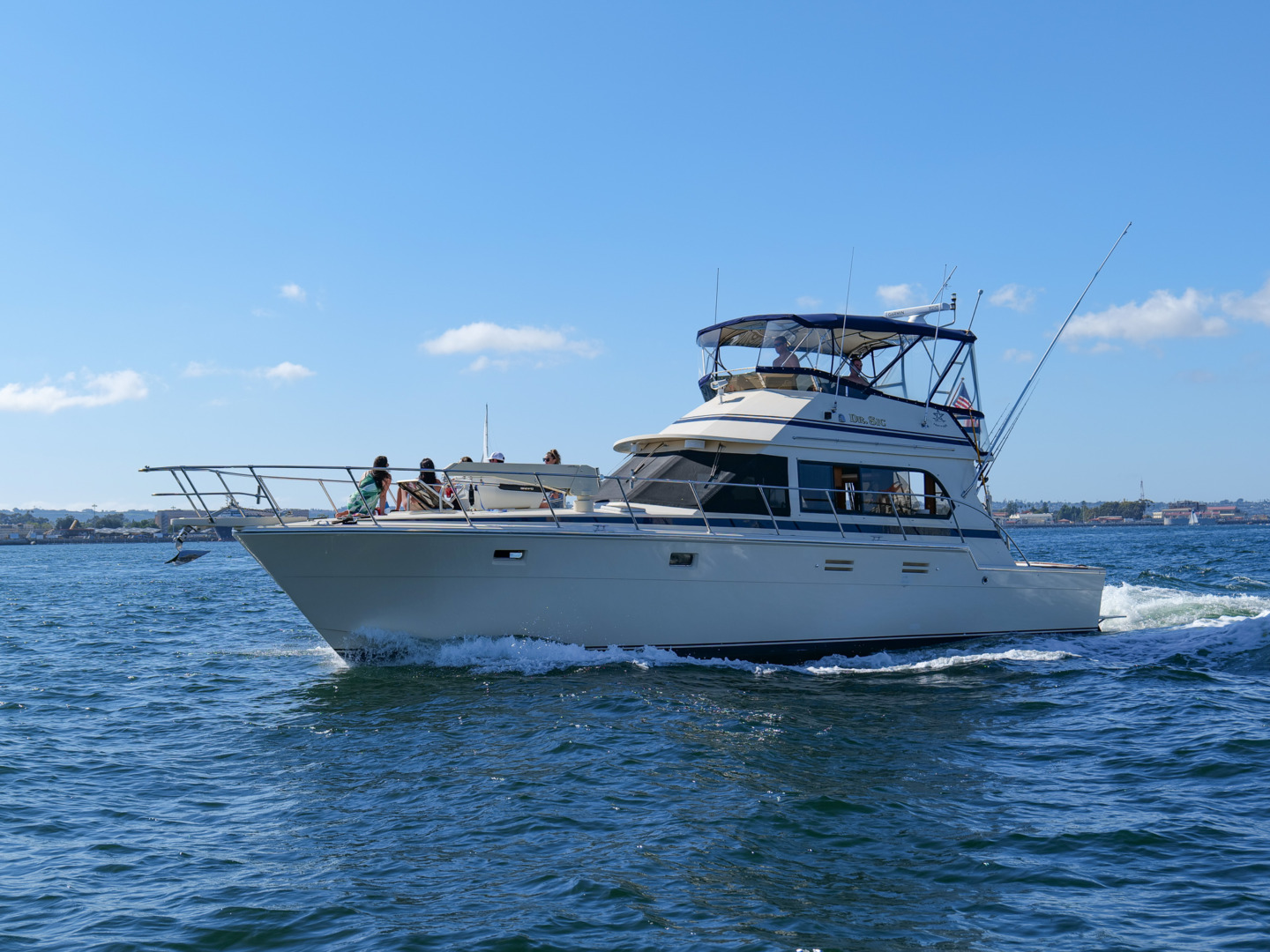
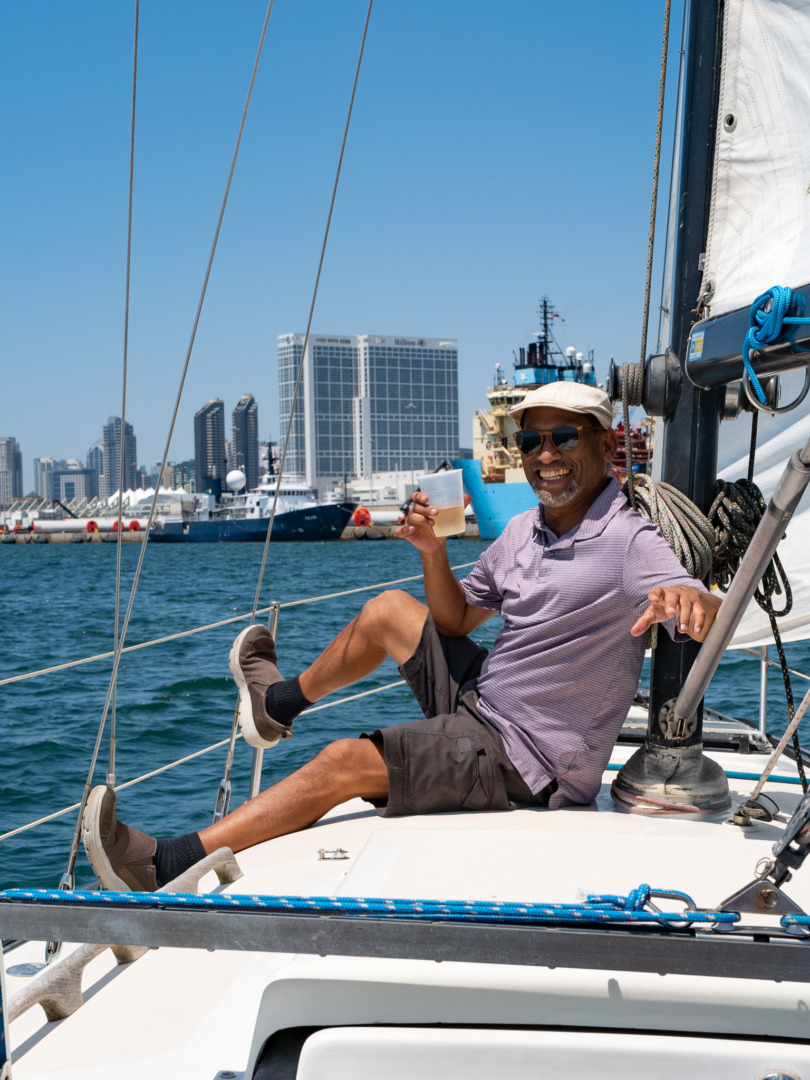
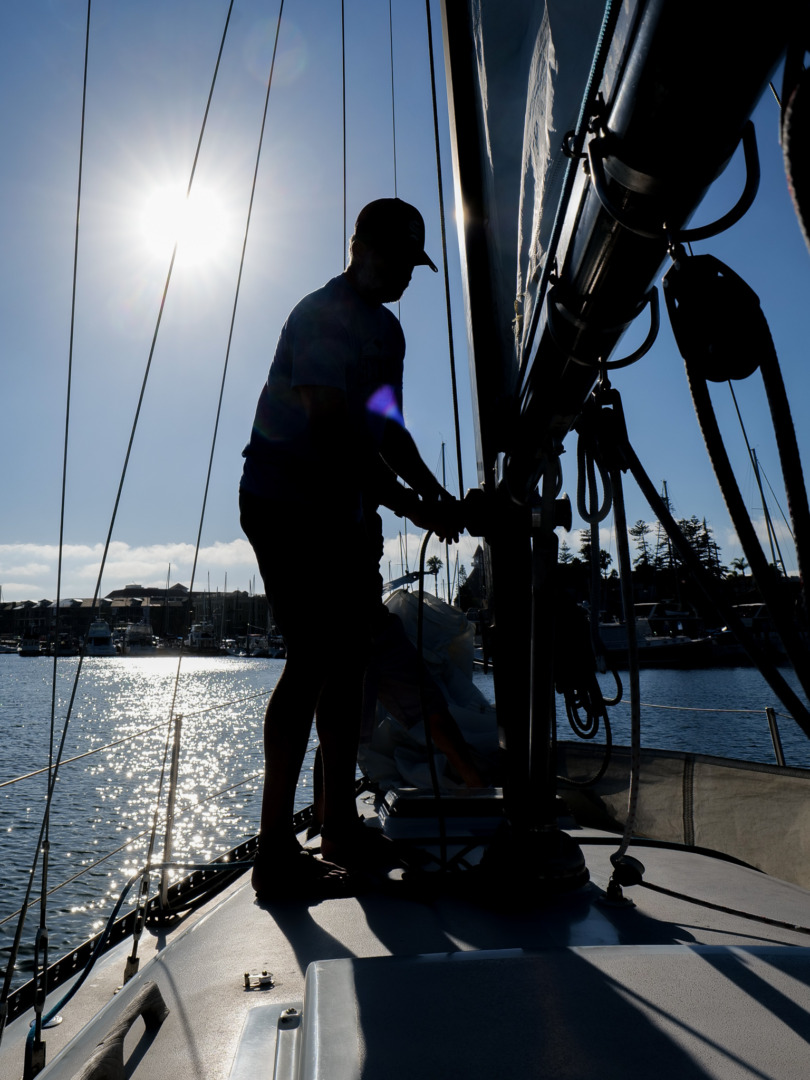
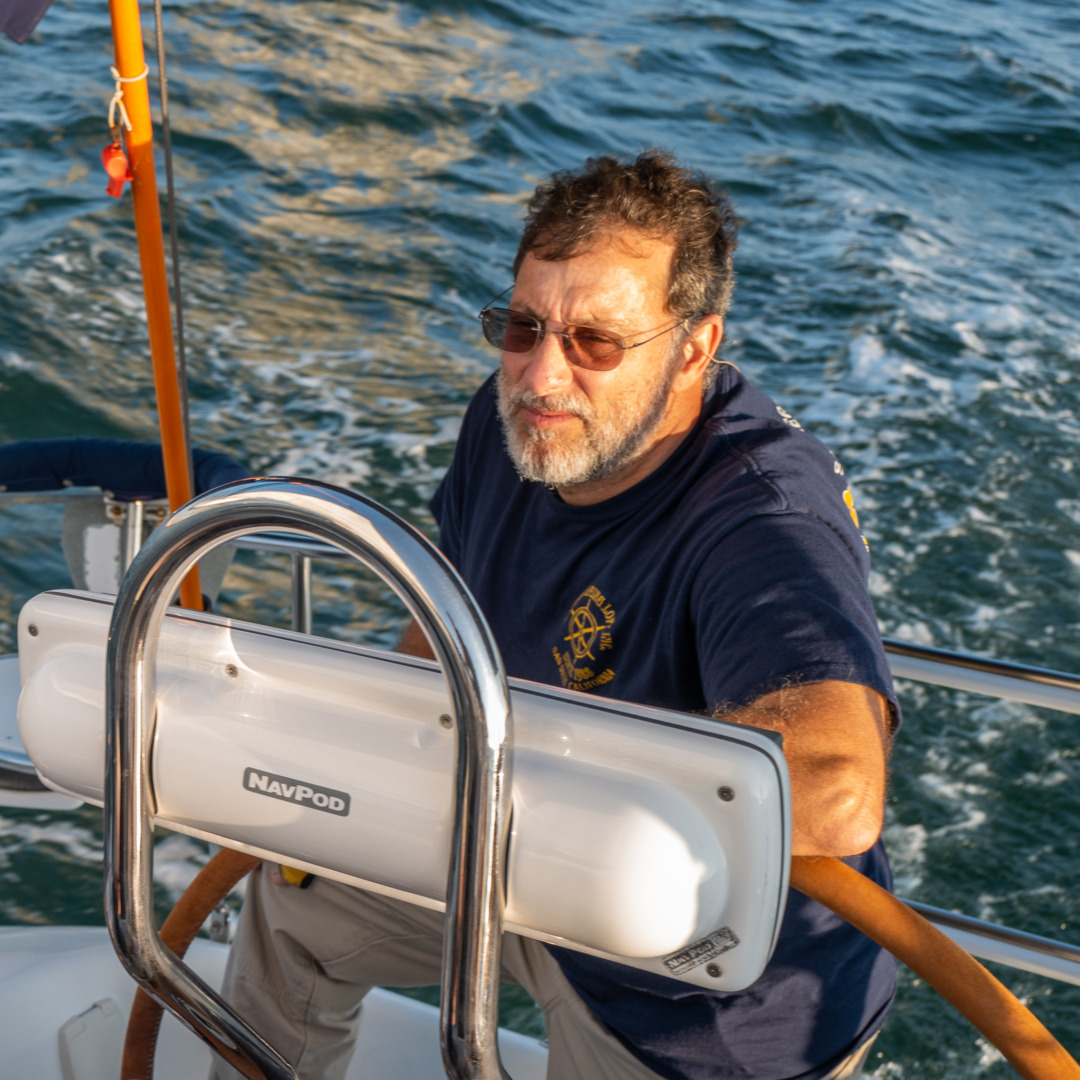
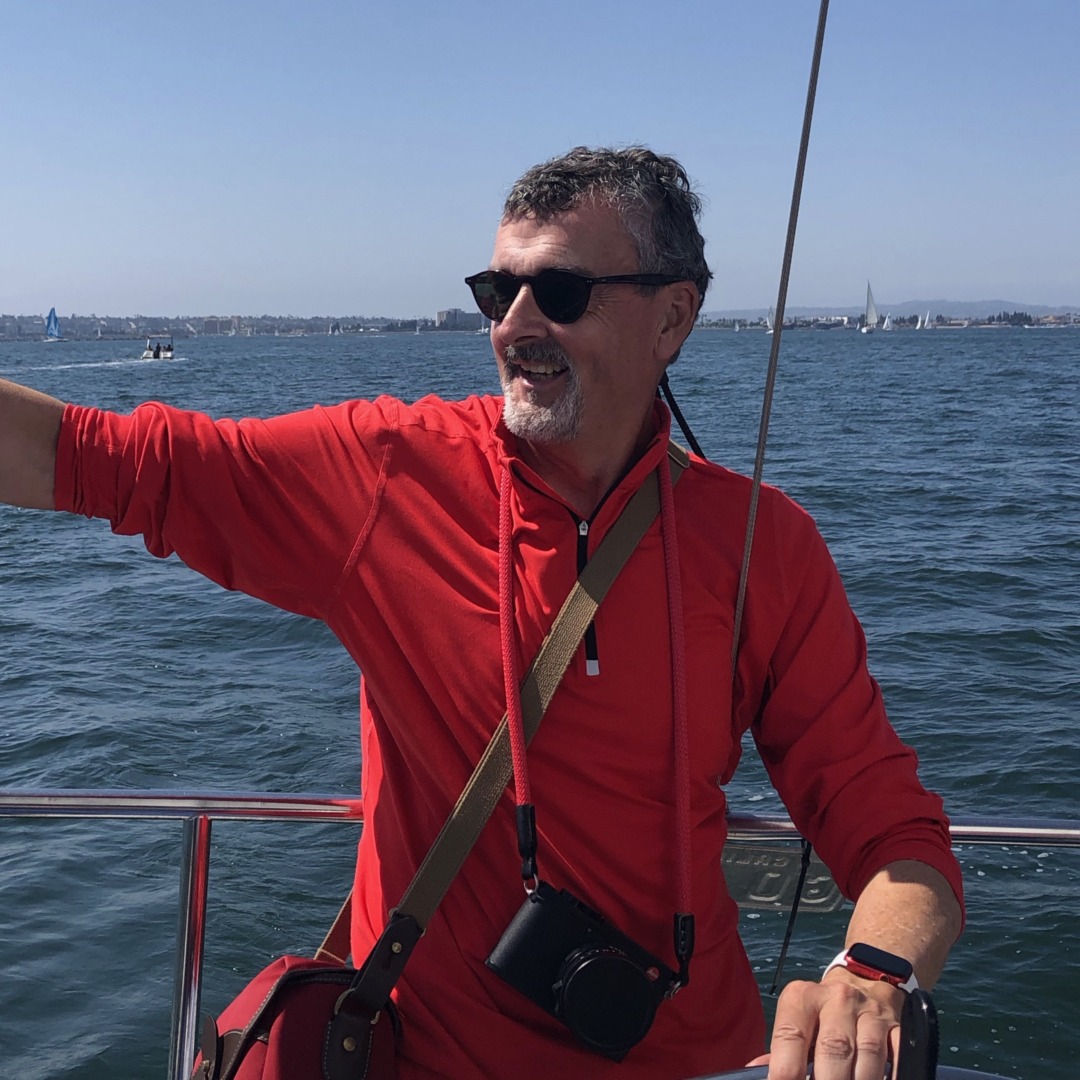
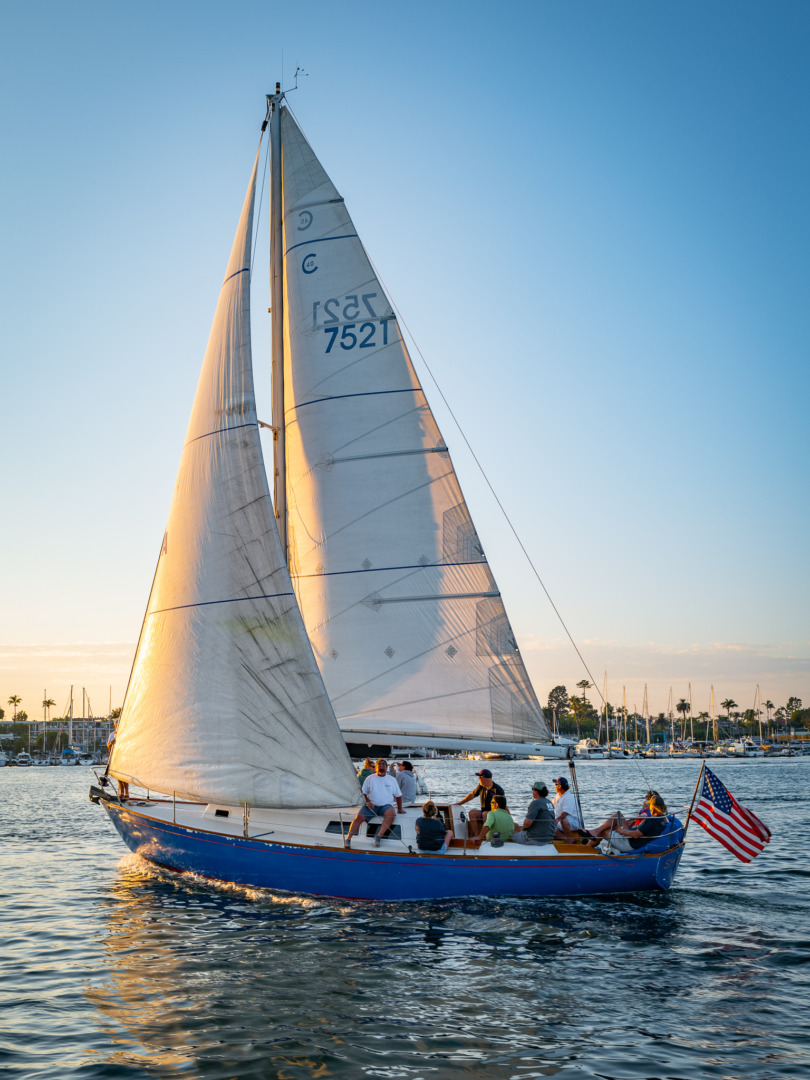
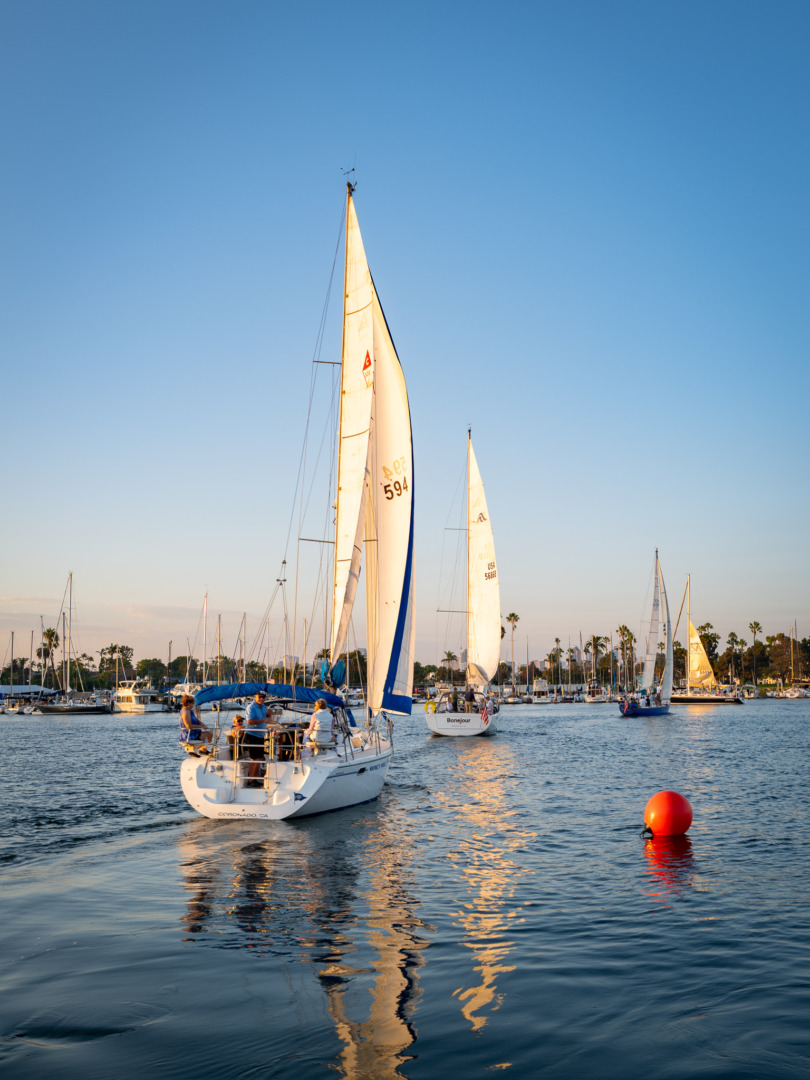
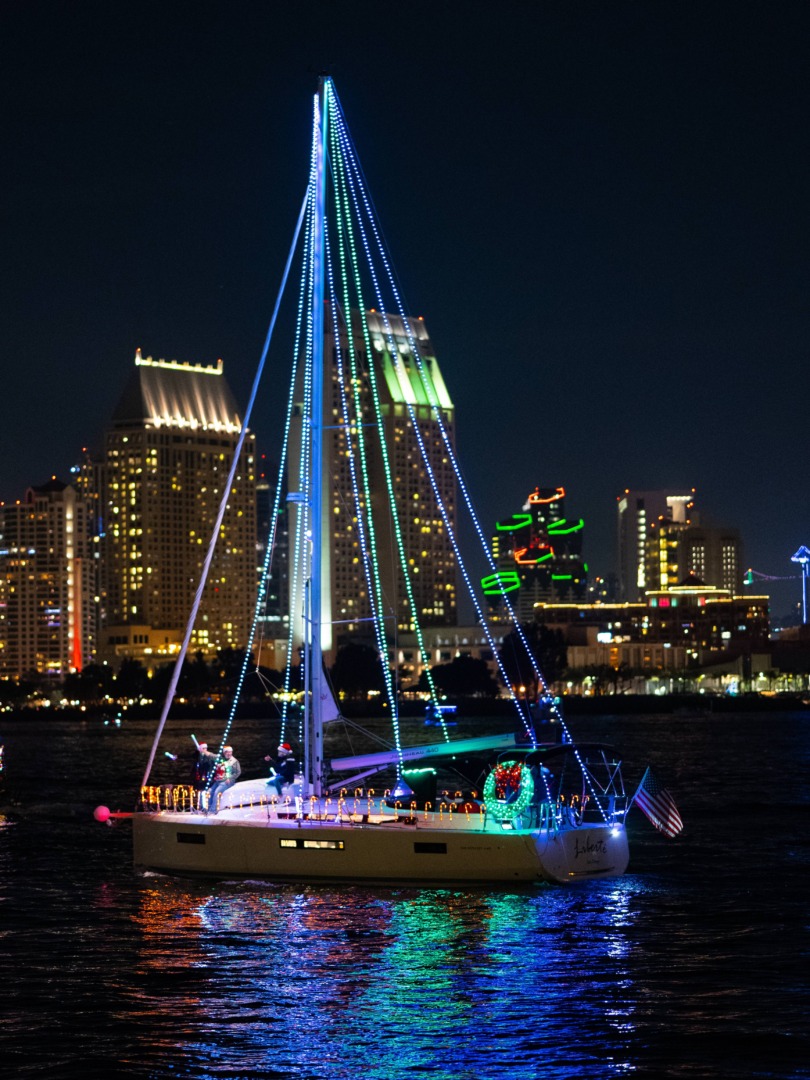
A very informative and interesting article on the complexities of sailing. The pictures are all well captured but I find the image of “head on” particularly striking.
Thanks for the treat!
Thank you very much Brian. It is fascinating hearing from the community which images people like most or provoke the strongest response. I find it is often clear, even while looking at the composition through the viewfinder, that the photo could be a good one. I wonder whether this is your experience too? Thanks again and all the best! Keith
So enjoyed the article and pictures. Extrodinary perspective.
Thank you Phyllis! That’s very kind. It was great fun putting it together. All the best! Keith
Keith, thank you for a fine series of sailing shots in idyllic weather conditions. You live in a beautiful area. Should you ever feel tempted to go further with your series, might I suggest that your Q2 could be tasked with capturing crew activity and somè of the architectural features of your vessel and, where possible, a few of the many boats in and around the Bay?
Hi David – many thanks! I feel very fortunate to live in such a beautiful location. Having grown up in Wales, very often walking to school and back in persistent drizzle, I try not to take the magnificent sunny climate for granted! Thank you for your great suggestion. I would enjoy compiling a part 2 along the lines you suggest. All the best! Keith
Thanks Keith for a great article and series of images. I particularly like the two shots when the sun is coming down (social occasion and red buoy). The light is simply beautiful and l like the light and shadows in the sails. Beautiful
Jean
Thank you Jean! I really like those two photos too. The mid-winter sunlight at dawn and dusk here is wonderful. I am often out and about early in the morning trying to take advantage of it, but these were a few rare opportunities to enjoy it at the end of the day. I am so glad you enjoyed them. All the best! Keith
A lovely series of images, and well captured – oddly I am with David B as the image with the Abraham Lincoln in the background is for me, amazing. I great composition and put together in post.
I have to say, your description of owning a yacht on a modest income, feels similar to my experience of owning a campervan in the UK, more so when the country is awash post covid lockdowns, and staycations with people who misuse the rules and don’t camp in the spirit of camping.
Thank you for an enjoyable start to the weekend.
Thank you Dave, I am really pleased that you enjoyed it. It was great fun putting the article together and choosing the photos to include. All the best with your camper van touring this year! Cheers, Keith
Keith
Thank you for writing such an entertaining article about sailing. I particularly enjoyed seeing your photographs where you seem to have perfect weather and without a cloud in the sky. I am writing this from the East Coast of England on a cold, grey winter’s afternoon.
George Bernard Shaw, the Irish playwright wrote: England and America are two nations divided by a common language. He didn’t mean it literally but merely as an illustration of the differences between the British and American people—in culture as much as in language.
Your title, “A slip in time ensures first cocktail” demonstrates the difference in our English and American culture and language. Over the years I have done much ocean sailing in the North Sea, English Channel and the Baltic. So I am familiar with nearly all nautical terms as used on this side of “the pond”. You say “bumper” we say “fender”, you say “jibe” we say “gybe”, you say “slip” but I don’t know what you mean. I presume you don’t mean “slipway” but rather a mooring or your place in the marina.
As for “drinkies” in a British sailing club, cocktails would not be a first choice: it is more likely to be: pink gin, beer or perhaps champagne if one has just won a race.
I must say that I am rather envious of your sailing location where it seems to be sheltered and without major risk of running aground: not like here on our tidal estuaries. I ran aground once opposite Felixstowe docks but fortunately the tide was rising.
Happy sailing for 2022.
Chris
Thanks so much Chris! I mistakenly assumed that ‘slip’ was a universally understood sailing term. It refers to a spot at which you can moor your boat at a dock, so that you can walk to it rather than having to paddle or motor to your boat, which might be sitting offshore. You are right that sailors in San Diego enjoy a very special sailing environment – sheltered Bay and sunny skies – but boats do occasionally run aground because the edges of the Bay are in fact quite shallow. All the best! Keith
great articles.
I wanted to send you a photo… but this is the link:
https://lbndaily.co.uk/mersey-ferries-increase-number-services/
Thanks Paul! I take my wise-crack back – Liverpool also has bright blue skies it seems! Perhaps the slight advantage we have in San Diego is that we enjoy blue skies over 300 days a year! 😉
That silhouette of the Abraham Lincoln with the yacht passing by is a great photo!
But ‘Head On’ ..! You’re not passing port-to-port (you’re passing with your right side passing theirs, unless you’re actually ahead of them and looking back) and if so you’ll be “taking the wind out of their sails” ..NOT done in the best yachting circles! (We-ell, it’s against the rules in a race, I believe, but perhaps not when you’re racing for the America’s Cup!)
Lovely photos – but I notice that none of the crew has a life-jacket. Nobody around San Diego ever trips and falls overboard?
I’m amazed that “..our local yacht club has two ‘slip’ lists: the first includes members waiting, usually for many years, to rent any slip that will accommodate their boat..” ..aren’t there any travelling boat hoists in San Diego? ..Hoist up the boat, carry it along to the boat park, and then plonk it down in a cradle, where it can sit for as long as it takes to scrape and paint the hull, change the shaft anode, swap the propeller, or just ‘anti-foul’ the undersides. They’re plentiful in the UK ..almost every boat yard has one!
What cheery pics to brighten up the day!
Thanks so much David! I appreciate your encouraging comments. Of all the photos in the article, I am most proud of the shot you highlighted. I am glad you liked it, and that you found the collection cheery! All the best! Keith